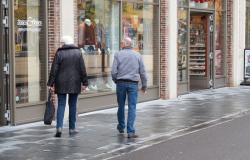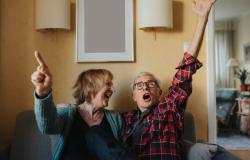Municipalities and the cabinet have major plans for sustainable district heating, especially in view of the climate goals. But setbacks get in the way of that transition. “Ultimately, we would be better off switching to a new type of nets.”
De overheid wil dat in 2050 een derde van alle huishoudens op een warmtenet is aangesloten. Er zijn openlijke twijfels over de haalbaarheid van dat plan, omdat de prijzen van stadswarmte vaak hoger uitpakken dan verwacht.
Het hoofdpijndossier rondom het warmtenet speelt al langer, maar bereikte de afgelopen weken een kookpunt. Zo strandde dinsdag een akkoord in de gemeente Amsterdam om sociale huurders tegemoet te komen met hun hoge rekeningen.
Woningcorporaties stoppen steeds vaker met de aansluiting van de warmtenetten vanwege de hoge kosten. De politiek probeert in te grijpen. Wat is er aan de hand?
Wat is stadsverwarming?
De meeste mensen gebruiken nog steeds aardgas om hun huis te verwarmen. Nederland moet in 2050 klimaatneutraal zijn: iedereen zal zijn huis dan op een CO2-neutrale manier moeten verwarmen. Warmtenetten, ook wel stadsverwarming, is een van de manieren om dat te doen in stedelijk gebied.
Bij een warmtenet wordt meestal restwarmte van de industrie, biomassacentrales of afvalverbranding via een ondergronds netwerk naar een warmteoverdrachtstation getransporteerd. Daar wordt water verwarmd en dat gaat vervolgens naar een wijk via pijpleidingen, waardoor gebouwen gasloos verwarmd worden. Het gekoelde water wordt vervolgens weer teruggebracht naar de warmtebron zodat het hergebruikt kan worden.
In Nederland zijn op dit moment zo’n 500.000 huishoudens aangesloten op een warmtenet. De netten zijn in handen van energiebedrijven. Afnemers van stadsverwarming kunnen niet zelf kiezen en moeten het doen met de beschikbare aanbieder.
Wat gaat er mis met het warmtenet?
In meerdere steden kregen afnemers te maken met hoge rekeningen voor hun stadsverwarming. In Amsterdam stegen de prijzen met 30 procent, omdat eigenaar Vattenfall geconfronteerd werd met hoge kosten van personeel en materialen. Ook inflatie speelde een rol.
Door die oplopende kosten kozen wooncorporaties in Amsterdam ervoor om geen nieuwe warmtenetten meer aan te leggen bij sociale huurwoningen. Een belangrijke voorwaarde was namelijk dat de prijzen niet hoger zouden uitpakken dan die van gas. Dat gebeurde toch.
De tarieven van stadswarmte zijn nu nog steeds gekoppeld aan de gasprijs, al lopen deze wel achter. De overheid wil de twee loskoppelen, omdat gas de komende jaren alleen maar duurder wordt. Een goed idee volgens toezichthouder ACM, maar dat kan er wel voor zorgen dat stadswarmte alsnog duurder wordt dan gas. Daarom moeten er meer maatregelen vanuit het kabinet komen, concludeert de ACM.
What does it mean for our sustainability plans?
Using residual heat from companies is part of the Climate Agreement. Some cities, such as Amsterdam, have high ambitions and want to be natural gas-free by 2040. But the city is now seeing that ambition increasingly disappearing from view. The aldermen involved wrote this in a letter to the council this week after failed negotiations with energy companies and housing associations.
The impasse also has consequences for national plans to connect half a million additional homes to the heating network by 2030, thinks Olof van der Gaag, chairman of the Dutch Association for Sustainable Energy. “Then there should be 80,000 connections added every year in the near future: five times as fast as it is now,” he says. “That is completely unfeasible.”
Van der Gaag also foresees bottlenecks for the longer term. “People are more likely to choose a heat pump because it is now cheaper.” More heat pumps only causes even more problems on the power grid. “In addition, it will no longer be profitable to install a heating network that benefits many people together.” That’s a shame, he thinks, because a heating network can quickly make entire neighborhoods more sustainable.
What does politics do?
In an attempt to alleviate the situation for customers of district heating, outgoing climate minister Rob Jetten announced this week that he would introduce an emergency law. This must ensure that fixed costs for customers remain within limits, but only from 2025.
There were doubts about the emergency law in the House of Representatives on Wednesday. In a debate, MPs wondered out loud whether Jetten’s proposed measures were sufficient.
According to the Amsterdam municipal council, the law is a start, but the national government will have to do more to make it more affordable for tenants, for example through an energy surcharge. In addition, the aldermen write that it must be made clear who is responsible. Because energy companies are also afraid that they will soon have to bear the costs.
What now?
Jetten’s emergency law can offer a temporary solution, thinks Annelies Huygen, professor of regulation of energy markets at Utrecht University. She calls it a “patchwork”. The professor has been researching the networks for years and says that they are up to three times cheaper abroad, partly because there is no link to the gas price there.
Huygen also thinks that our nets are quite traditional. “We would be better off switching to new concepts, such as the solar heating network.” In Sweden, but also on a small scale in Haarlem, they are already working on such a revolutionary heating network. Still expensive now, but it is the future according to Huygen. “Ultimately, the goal is a more or less energy-neutral district, integrating heating, cooling and electricity.”
Tags: Unfeasible plans heating network hinder sustainability climate
-





